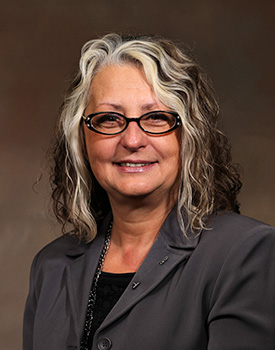
The most exciting challenge has been establishing research topics that engage students and attract more funding.
Meanwhile, we have been building many bridges with chemical engineering, civil engineering, chemistry, radiochemistry, electrical engineering, computer science and more. Together, we have developed new research ideas, shared students, and written many proposals together.”
Tatjana Jevremovic: Building the U’s Nuclear Program
Tatjana Jevremovic was just a little girl in her hometown of Belgrade, Serbia when she was introduced to the intriguing possibilities of nuclear engineering. Since then, she has made it her life study. She became the director of the Utah Nuclear Engineering Program at the University of Utah in 2009 and was tasked with rebuilding the department and taking it to new heights.
Q: What sparked your interest in nuclear engineering as a career?
At the age of 11, I came across a book in my favorite bookstore back home in Belgrade titled, Nuclear Engineering and Its Applications. I was instantly fascinated by the fact that I could only understand just one word in the book’s title: “applications.” I used my monthly pocket-money to purchase the book (which I still have) and read it all.
The last chapter on boron neutron capture therapy for the treatment of cancer was so fascinating (although I only understood the meaning of the word “cancer” and didn’t know what “boron,” “neutron,” and “alpha particle” meant), I made up my mind that I wanted to study it.
I loved every moment of my university learning and every moment of my life in the world of nuclear engineering. I don’t regret being stubborn and making it happen for myself. I can’t tell if I liked my challenges more back home in Belgrade or in Japan (where I spent close to 11 years) or here in the U.S. The challenges were different but inviting, and they still are.
Nuclear engineering remains to be an amazing discipline for me as it was when I read that book. I am trying daily to pass on that message to my students and co-workers.
Q: The University of Utah hired you away from Purdue University with an opportunity to revive the U’s nuclear engineering program. What was attractive about taking on that challenge?
A: EVERYTHING. I was able to build, revive and renew the program. I also got to learn and be challenged with establishing goals and reaching them. And the U’s administration kept the research reactor live. It’s exciting that such a facility brings education and training programs with cutting-edge research. I’m appreciative of how supportive and unified everyone has been in keeping and rebuilding the nuclear engineering program at the U – it has been a source of inspiration for us in nuclear engineering to grow and work hard every day.
Q: In the last four years, you have re-built the nuclear engineering program. What has the experience been like and how successful have you been in reaching your goals?
A: These years were challenging but truly rewarding. I had many things to work out as soon as I joined the U. The first big challenge was to prepare complete documentation for our research reactor’s operational re-licensing. Usually this takes four to five years of work. I had less than one and a half years. But we did it in time, and we were issued the U.S. Nuclear Regulatory Commission license for the next 20 years. We had great support along the way from Dean Richard Brown, Vice President of Research Tom Parks and Associate Vice President of Research Cynthia Furse.
I established the safety procedures and corrective action program system for our research reactor and associated labs. With this, we mirror the rigorous operations and safety procedures of nuclear power plants. We now train our students with a unique set of skills, and no other program provides them with the same detail and level of preparedness as we do.
We established a nuclear engineering minor in 2010, and I have updated the graduate program content. We also are now admitting graduate students directly into the Ph.D. program.
The most exciting challenge has been establishing research topics that engage students and attract more funding. Meanwhile, we have been building many bridges with chemical engineering, civil engineering, chemistry, radiochemistry, electrical engineering, computer science and more. Together, we have developed new research ideas, shared students, and written many proposals together.
Q: The U is one of the few universities in the country with a working TRIGA nuclear reactor for research. How do you use that for the benefit of students?
A: We train our students to operate the reactor and receive U.S. Nuclear Regulatory Commission licenses. We use it to develop hands-on experiential learning for all of our classes. Our newly established neutron activation analysis is available for research or industry applications. Our newest and boldest application for the reactor is for our recently-established research and one-of-a-kind graduate program in nuclear forensics. Finally, I can use our facility for studying boron neutron capture therapy applications for various cancer treatments. I started that research many years ago, inspired by the book I read when I was 11.
Q: What is your vision for the University of Utah’s Nuclear Engineering Program and where do you want to take it for the future?
A: We continue to show an important growth in the number of minor and graduate students in nuclear engineering. That’s because we challenge them with inviting, forward-thinking research ideas. I want us to be a nationally-ranked program. I hope I will get there with my great faculty, my superb staff at the reactor, and with our great students.